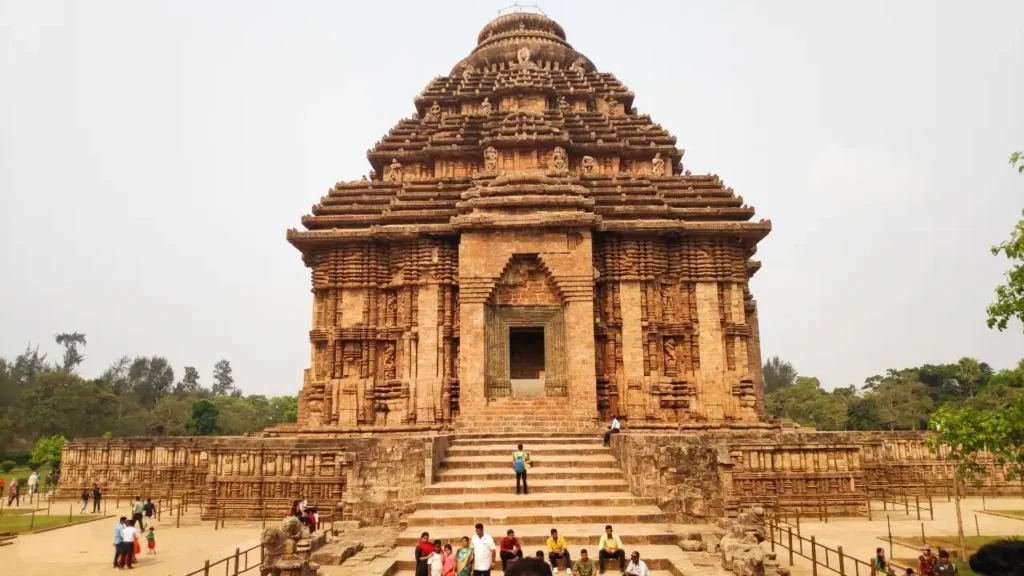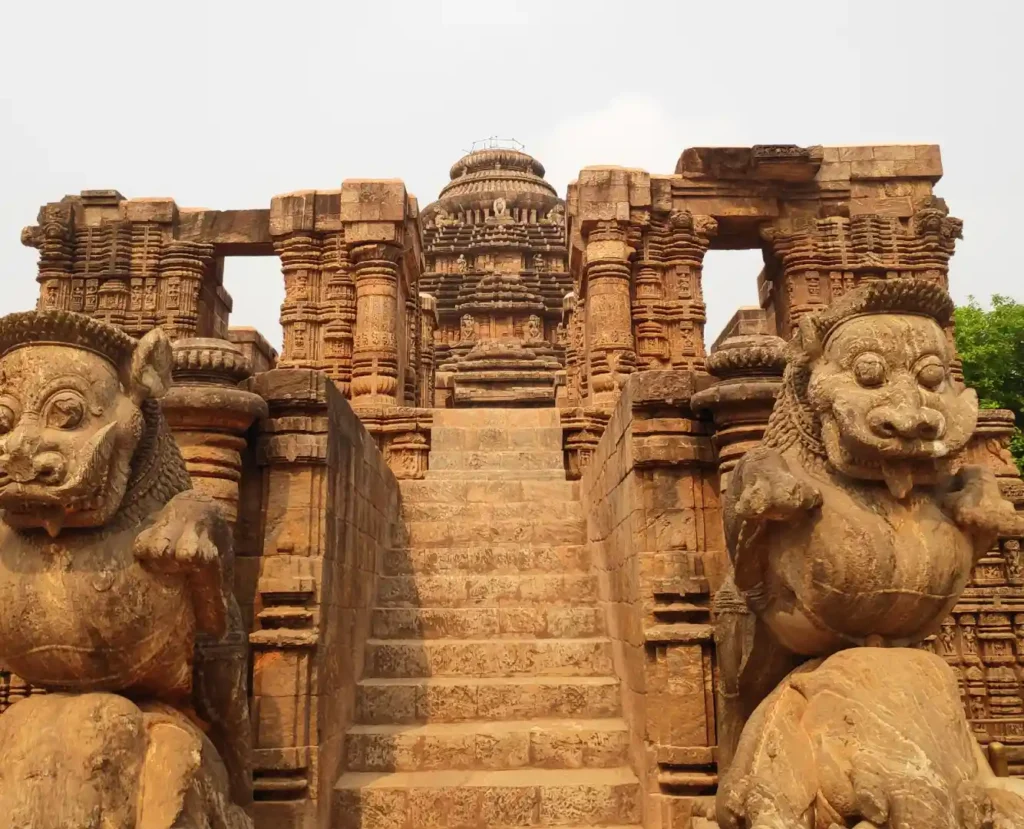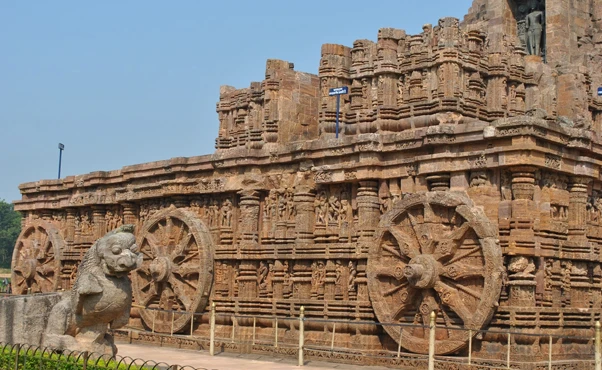
History of the Konark Sun Temple
Commissioned around 1250 CE by King Narasimhadeva I of the Eastern Ganga dynasty, the temple was designed as a celestial chariot dedicated to Surya, the Sun God. Furthermore, located just 35 km from Puri, its strategic coastal position made it not only a religious hub but also a maritime landmark. Indeed, its architecture reflects both devotion and engineering brilliance.
Moreover, European sailors later nicknamed it the “Black Pagoda”, contrasting it with Puri’s “White Pagoda” (the Jagannath Temple). Consequently, its dark stone exterior and towering spire once served as a guiding landmark on the sea. Additionally, it continues to attract historians and pilgrims alike, highlighting its enduring significance. Therefore, the temple remains an iconic symbol of Odisha’s cultural and maritime heritage.
Architectural Brilliance: The Chariot of the Sun
- 24 intricately carved wheels (each 12 feet in diameter), which also function as sundials.
- 7 majestic stone horses pulling the chariot, symbolizing the days of the week.
- The main sanctum (now collapsed), assembly hall (jagamohana), and dance hall (natmandir), aligned with the path of the rising sun.

Sculptural Legacy of Konark Sun Temple
- Scenes from the Ramayana and Mahabharata.
- Depictions of deities, dancers, musicians, and daily life.
- Erotic maithuna figures, celebrating fertility and the union of energies.
Myths and Legends of Konark
- Samba, son of Krishna, is believed to have built the temple after Surya cured him of leprosy.
- Stories of Bishu Maharana, the legendary architect, recount the labour of 12,000 artisans over 12 years.
- The Aruna Stambha (pillar) once at Konark now stands at Puri’s Jagannath Temple, symbolizing cultural exchange.
Konark as the Black Pagoda
UNESCO World Heritage Site
In 1984, Konark Sun Temple earned the status of a UNESCO World Heritage Site. Consequently, this recognition emphasizes several key aspects. Firstly, its architectural grandeur. Moreover, its universal cultural and historical value. Additionally, its role as one of the greatest achievements of medieval Indian temple art is highlighted. Indeed, these features collectively showcase the temple’s significance. Furthermore, it continues to inspire historians, architects, and travelers alike.
- Its architectural grandeur.
- Its universal cultural and historical value.
- Its role as one of the greatest achievements of medieval Indian temple art.
Festivals and Tourism at Konark
- Konark Dance Festival (December): A five-day celebration of Indian classical dance, with Odissi at its heart, performed under the temple’s majestic backdrop.
- Chandrabhaga Mela (February): Pilgrims take a holy dip at the Chandrabhaga beach, celebrating their devotion to the Sun God.
How to Reach and Best Time to Visit
- By Air: Bhubaneswar’s Biju Patnaik International Airport (65 km away).
- By Rail: Puri Railway Station (35 km) is the nearest major hub.
- By Road: Excellent connectivity from Puri and Bhubaneswar via NH-16 and NH-316.
Conservation Concerns and Preservation
- Salty winds and humidity, eroding sandstone carvings. Moreover, these natural factors accelerate deterioration if not monitored.
- Pollution and tourism pressure, straining its fragile structure. Additionally, unchecked visitor activity can worsen the damage.
Why You Must Visit Konark Sun Temple
- To witness a fusion of science, spirituality, and art.
- To explore one of India’s most iconic World Heritage Sites.
- To immerse in Odisha’s vibrant culture through festivals and local traditions.
- To marvel at an ancient engineering and architectural wonder that still inspires awe.
People Also Ask – Answers to Common Questions
1. Who built the Konark Sun Temple?
2. Why is Konark called the Black Pagoda?
3. What is unique about the Konark Sun Temple’s architecture?
4. Is the Konark Sun Temple still active for worship?
5. When is the best time to visit Konark Sun Temple?
Conclusion
The Konark Sun Temple is not just a monument—it is a living narrative of Odisha’s devotion, artistry, and maritime legacy. Moreover, from its stunning wheels that tell time to its sculptures that narrate life’s philosophy, Konark embodies the highest ideals of Indian creativity.
Therefore, if you’re planning your next trip to Odisha, make sure Konark Sun Temple tops your list. Additionally, witness history carved in stone and let the magic of this Black Pagoda leave you inspired.